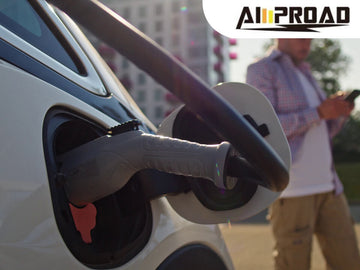
Congratulations on joining the eco-friendly world of electric vehicles (EVs)! Transitioning to an EV is a significant step toward reducing your carbon footprint and contributing to a more sustainable future. As part of this journey, you might be considering installing an EV charger at your home. Not only does the home EV charger provide the convenience of charging your vehicle at your residence, but it also comes with financial benefits, thanks to the federal tax credit available for EV charger installations. Here’s a comprehensive guide on how you can claim this credit in the United States.
Step 1: Understand the Credit
The official name for the EV charger tax credit is the Alternative Fuel Vehicle Refueling Property Credit. This credit allows you to deduct a portion of the cost associated with purchasing and installing a qualified EV charger from your federal income taxes. As of 2024, the credit covers 30% of the total cost, with a maximum credit amount of $1,000 per charger. This incentive aims to encourage the adoption of clean energy technologies by making them more financially accessible to consumers.
Step 2: Check Eligibility
To qualify for the Alternative Fuel Vehicle Refueling Property Credit, you need to meet specific criteria:
-
Original Purchaser and Installer: You must be the initial buyer and installer of the EV charger. Second-hand purchases or installations done by previous owners do not qualify.
-
Primary Residence: The charger must be installed at your primary residence within the United States. This ensures that the credit benefits homeowners who are integrating EV charging into their daily lives.
-
Qualified Charging Station: The charger must be listed as a qualified charging station by the IRS. You can find the list of eligible chargers on the Department of Energy website at IRS Qualified Chargers.
Step 3: Gather Your Documentation

Proper documentation is essential for claiming the EV charger tax credit. Here’s what you need to keep organized:
-
Receipts: Maintain all receipts related to the purchase and installation of the level 2 EV charger. These receipts should clearly indicate the cost of the charger and the installation expenses.
-
Specifications: Ensure you have documentation that proves the charger meets IRS qualifications. This could include product specifications, user manuals, or certification statements from the manufacturer.
-
Proof of Residence: You will need to verify that the installation was done at your primary residence. Acceptable documents include utility bills or property tax statements that list your primary address.
Step 4: File Your Taxes
When it’s time to file your federal income tax return, you can claim the EV charger tax credit. The forms you will need depend on your filing status:
-
Form 8911: This form is used by most individuals and partnerships to claim the Alternative Fuel Vehicle Refueling Property Credit. You will need to provide details about the charger and installation costs.
-
Form 3800: This form is used by businesses to claim general business credits, including the EV charger tax credit. If you’re a business owner who has installed a charger at a commercial property, this form is necessary.
Tax Professionals
Navigating tax credits can sometimes be complex, especially if your financial situation involves multiple sources of income or other credits. Consulting with a tax professional is highly recommended. They can help ensure that you meet all the eligibility requirements and maximize your tax benefits. A tax professional can also assist with the correct completion of forms and provide advice tailored to your specific circumstances.
Additional Tips
-
Save for the Future: Remember that this tax credit reduces the amount of taxes you owe. It does not provide a direct cash refund. Properly planning your finances to leverage this credit can help reduce your overall tax liability.
-
State Incentives: Beyond the federal tax credit, many states offer additional incentives for installing EVSE chargers. These can include rebates, tax credits, or grants. Check with your state’s energy or transportation department to see what additional benefits you might be eligible for.
Your EV Charger Tax Credit and a Sustainable Future
By following these steps and keeping your documentation organized, you can successfully claim your EV charger tax credit and save on your federal taxes. This credit not only makes owning an EV more affordable but also supports your contribution to a cleaner and more sustainable future. As the adoption of electric vehicles continues to grow, these incentives play a crucial role in promoting environmentally friendly technologies and reducing our collective carbon footprint. Enjoy the benefits of your EV and the convenience of charging it at home while taking advantage of the financial incentives available to you.


